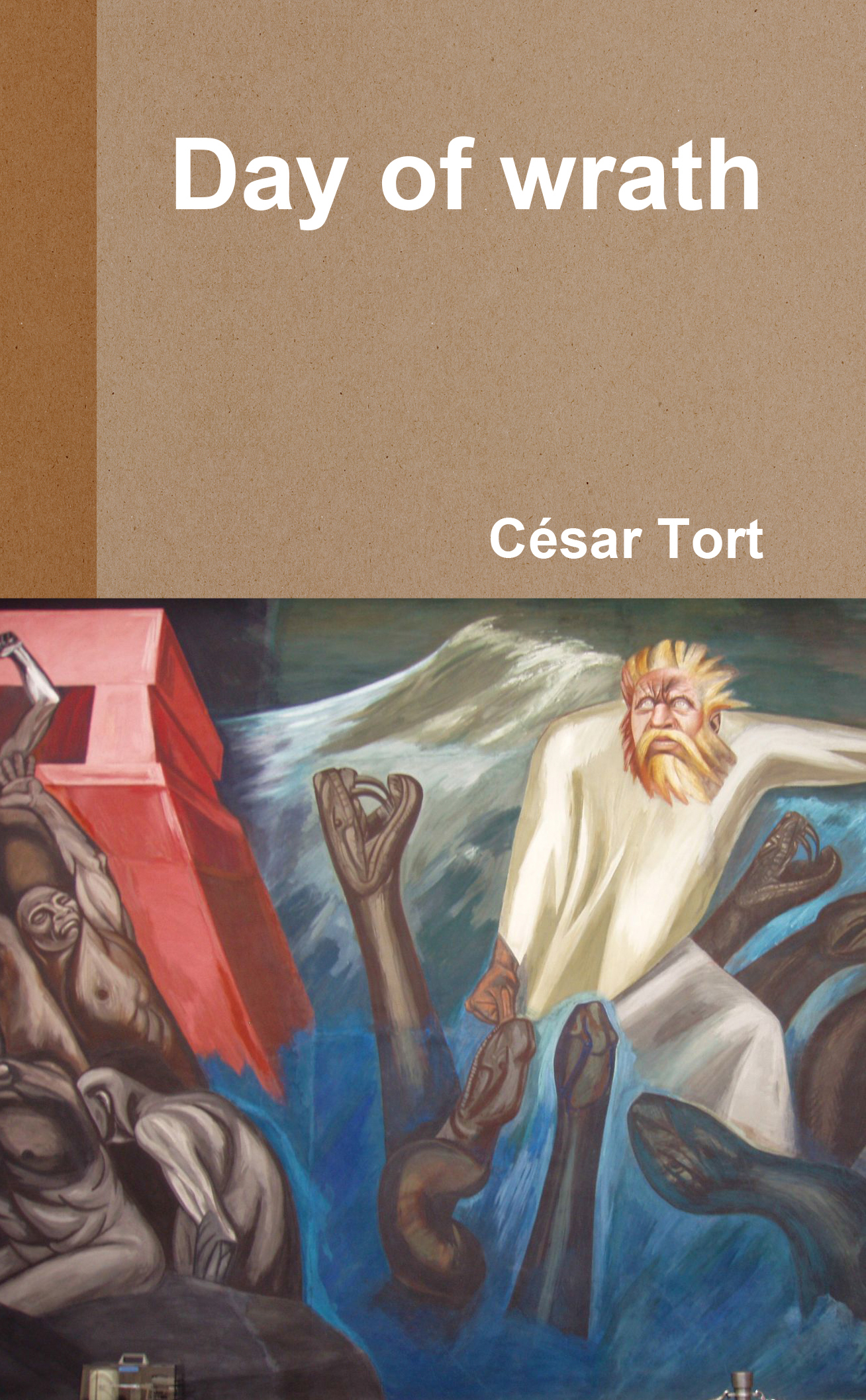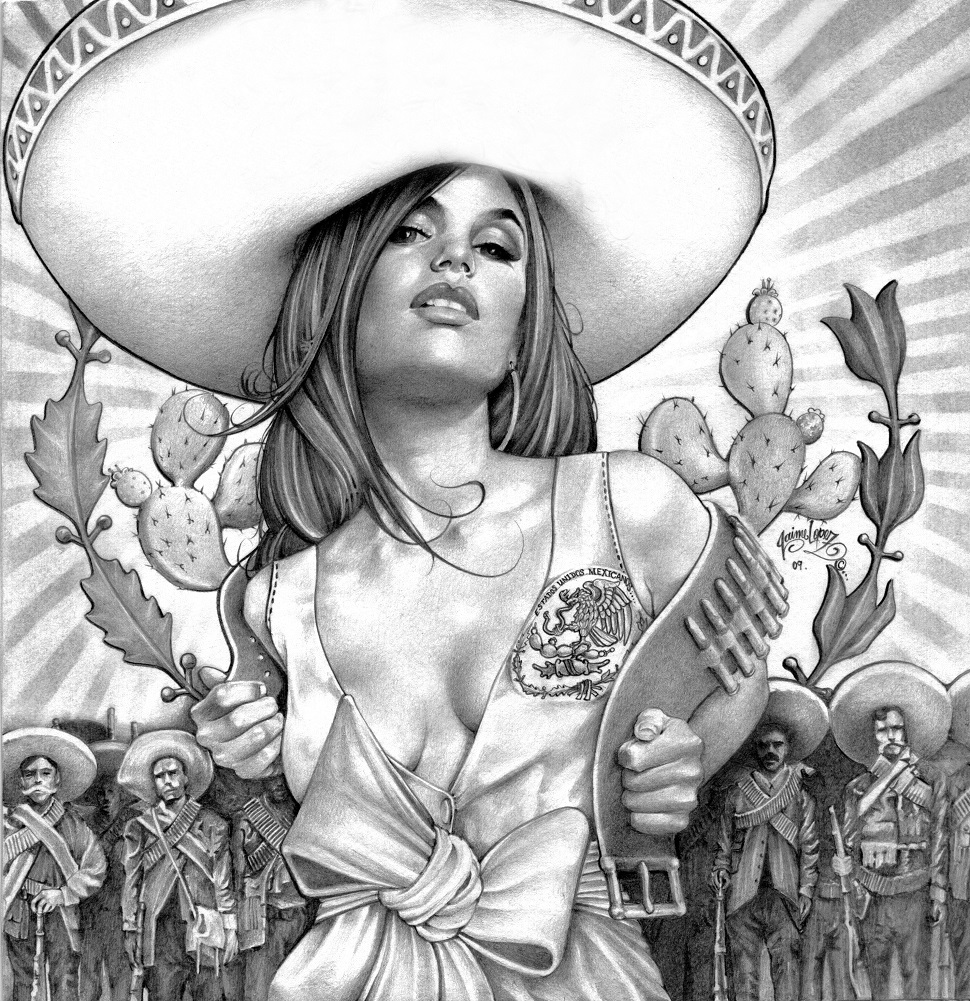
I am reposting the below entry, originally published on November 20, because for a mysterious reason comments were off below this article and I just discovered it a few minutes ago (maybe the reason why this entry had received zero comments). Did I inadvertently click on a wrong button last month?
At any event, now that I have seen more Spanish television series, I must say that what my “snatched” cousin did in Mexico the Spaniards are doing it too at the other side of the Atlantic. For example in the 2010 series Hispania (article of the Spanish wiki: here) the hero and liberator of some Hispanic towns from the Roman invaders, third guy in the above pic, is not an Aryan; and his daughter, not shown above, looked like an Amerindian child. Keep in mind that these series are supposed to depict the peoples of the Iberian Peninsula in the second century B.C., long before the huge mongrelization after the Moor invasion.
I also watched the 2012 prequel of it (article of the Spanish wiki: here) but I have no more liver left to continue to debunk all these silly series. Better repost about—:
My pod cousin

Recently I have been complaining about the fact that American films and British and Spanish TV series are mediums for either anti-white propaganda or at least not pro-white messages (with the sole exception of the first episode of The White Queen). A naïve person could think that if I approach, instead, a series directed by one of my cousins the message would be a little more positive.
Gritos de Muerte y Libertad (Screams of Death and Freedom) is a Mexican television series based on the period of the war of independence of Mexico, produced by Leopoldo Gómez and directed by my cousin Gerardo Tort (pic above) and the lesbian Mafer Suárez. Several writers wrote thirteen episodes of the first season of the series advised by a group of historians. The series premiered on August 30, 2010 to mark the bicentenary of the independence of Mexico from Spain and ended on September 16 of that year.
I have already quoted Mexican intellectual José Vasconcelos (1882-1959) in this blog stating that the war of independence was “supposed to destroy the Spaniards, who represented the force and culture of the country… all under the pretext of freeing the Indian.” And two months ago I revealed here some hidden facts about Miguel Hidalgo y Costilla, the father of the Mexican independence.
All 19th century paintings of Hidalgo, like the one you see in the Wikipedia article about him, are fake. All were based on an original portrait of an Aryan man of Austrian origin who posed as Hidalgo because nobody had painted a portrait of the real Hidalgo by the time he was elevated to the status of father of the independence, and the man was long dead and the new nation needed a noble face to honor (just as the Americans have their portraits of George Washington).
Well, original spoken reports describe Hidalgo not like an Aryan but with hooked nose. What does it mean?
That the overwhelming majority of Mexicans ignore that the Catholic priest Hidalgo was probably the son of Jewish conversos. Presently even the Mexican Jews, no longer in the need to hide the Jewishness of their people, have acknowledged it.
Of course: my cousin Gerardo Tort was only a hired hand to direct a script written by others. But since I know him I surmise that he did not object the anti-Spain bias of the script. It is worth mentioning that at the beginning of the century Gerardo Tort had made an “author film” about homeless kids in Mexico City, and later filmed a documentary of his own about a Mexican guerrilla fighter he admires and perfectly fits his lefty ideology. I had not watched the series Gritos de Muerte y Libertad until yesterday [November 19, 2013] but now that I am reviewing other television series I would like to say something about it.
In the first episode one of the pro-Spain characters says these words (in Spanish of course) about the pro-independence movement, “Imagine a government Criollos [ see Criollo people], Indians, Mestizos and Mulattos!”
Yes: thoroughgoing leftists like my cousin know that ultimately the struggle is racial. But race conveniently disappears when Whites claim majority rights—or even minority rights in the case of New Spain. In Gritos de Muerte y Libertad what I found most surreal is that the overwhelming majority of upper class New Spaniards are depicted as Mestizos or Castizos (slightly whiter Mestizos), not even as Harnizos (Iberian whites with a distant drop of Amerind blood) or true Iberian whites. The script that Gerardo Tort directed mentions “Criollos” many times in the textual dialogues, but during the casting he selected Mestizo actors. Phenotypical Criollos do appear in the next episode, but that episode was directed by the lesbian.

Most surreal of all is that the Aryan-looking actor who was chosen for Hidalgo by both directors, the actor at the far left in the pic, was—not in the series but in real history—a kike with even the prototypical hooked nose, according to the spoken testimony of those who had seen the historical Hidalgo in the flesh. Also, in Gritos de Muerte y Libertad my cousin depicts José de Iturrigaray, the Viceroy of New Spain from 1803 to 1808 (standing in the pic with a ridiculous wig), as an ignoble character; and for María Inés de Jáuregui y Aróstegui, his wife, he chose a Mestiza actress (wasn’t the historical Inés an Iberian White too?).
So you have Gerardo Tort, the phenotypical Criollo, filming the Spanish Viceroy as the bad guy and the kike Hidalgo as the good guy of his movie. This said, I doubt that Gerardo knows that the historical Hidalgo was genetically Jewish. Like all Mexican leftists he is sleeping in a profound Matrix.
In the other episodes of the series that my cousin also directed a dialogue caught my attention. A woman asks Hidalgo: “Removing the command from the Europeans and handing it over—to who?” at the time of delivering a hostile look to a Mexican Indian beside her. Of course: the woman is depicted almost as a bigot.
Gritos de Muerte y Libertad includes explanatory notes to clarify the supposed historical events for the Mexican audience. In one of these texts it is announced that, once in jail and excommunicated by the Catholic Church, Hidalgo actually repented that the mud mobs he had commanded massacred civilians in the Alhóndiga de Granaditas—a ridiculous claim since Hidalgo was very well known for his cri de guerre “¡Viva la Virgen de Guadalupe y mueran los gachupines!” (“Life to the Virgin of Guadalupe and death to the Spaniards!”).
So clearly racial is the script of Gritos de Muerte y Libertad that it includes these words by a fearing Viceroy when Hidalgo’s mud mobs reached the capital of New Spain, “This is the main square of the Spanish crown! And no horde of Zambos [half-breeds of Amerinds and imported Negroes] will claim it ever!” This was the Viceroy who succeeded José de Iturrigaray, but my cousin also puts him under bad light.
In subsequent episodes, Gerardo Tort has Hidalgo incarcerated prior to his shooting after having lost important battles with the troops loyal to Spain. Once again my cousin used a Mestizo actor for the jailer. Hidalgo recounts his adventures to the jailer and is depicted as noble and wise. The jailer even recognizes that Hidalgo “is a good man, a son of God.” At least in that monologue my cousin has Hidalgo recognizing that in Guanajuato his furious mobs killed women and children, but he didn’t dare to film the actual scenes showing the Mexican public that the victims were probably White, and the assassins Indians and Zambos.
Gerardo Tort filmed the platoon that shot Hidalgo, again, as a group of slightly mesticized Indians. I wonder if machines to see the past are ever invented and we could see the historic scene rather as whiter men shooting an obvious kike? But before the shooting Hidalgo delivers candies—yes: candies!—to his executioners and after the shooting one of them is on the verge of tears. How moving.
There are two DVDs in the product Gritos de Muerte y Libertad that I acquired yesterday, the next one dealing with Hidalgo’s successor, the mulatto José María Morelos, who continued the killing of Iberian whites after the death of his mentor. But I don’t have any humor left to watch this second DVD.
♣
A few years ago, here in Mexico City some nacos (insulting pejorative for Indian-looking residents of Mexico City, analogous to what in the US is called “nigger”) assaulted Gerardo’s brother. Curiously, one of Gerardo’s two sisters once told me during a private conversation that the nacos must “have the same rights.”
Yes… all of my relatives are now Pod people. And a worse kind of Pods to boot than the American liberals since among older American folks there is at least the memory of their nation being mostly White. Those who have watched the 1956 film Invasion of the Body Snatchers for instance can see a nice California town populated exclusively by Whites. This was California before Aztlán took over.
Mexico, even since the three centuries when it was known as New Spain, has experienced no less than half a millennium of miscegenation. The remaining Criollo have been so thoroughly indoctrinated through centuries of Christian and liberal propaganda that the sole mention of avoiding intercourse with the mudbloods would be considered a kind of unheard of heresy. I would go as far as claim that after the dollar crashes dragging the Mexican peso with it and after my native town burns, the apocalyptic shock won’t be enough to awaken the remaining Criollos (like Gerardo) from their catatonic sleep.











